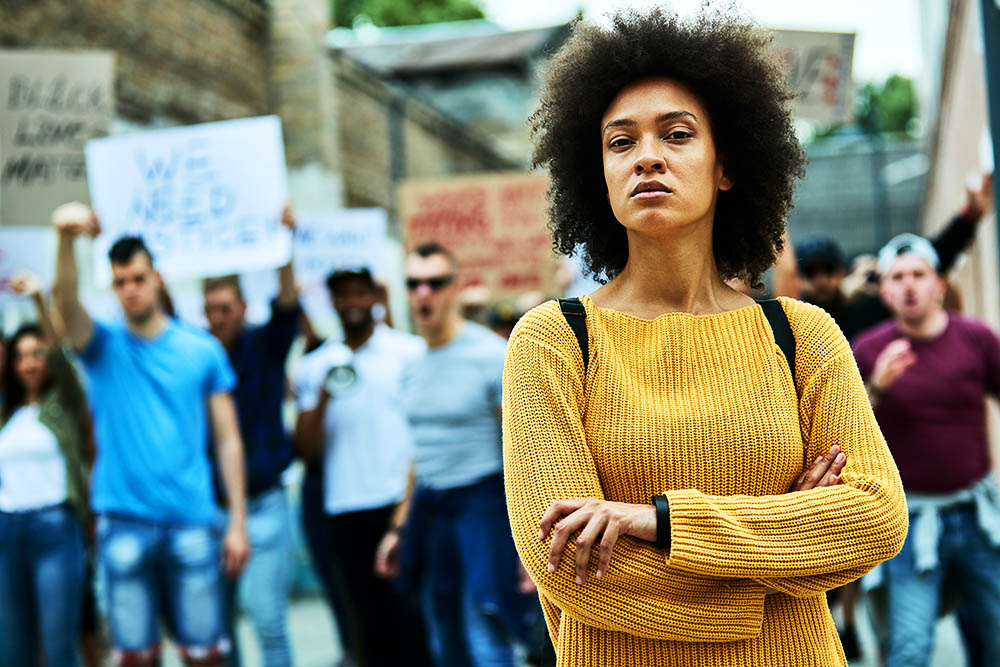The Persistence of Discrimination: A Brief Overview
Discrimination has been a pervasive social phenomenon for centuries. If it’s not discrimination based on race, it’s based on gender, sexual orientation, religion or country of origin. Despite significant progress in addressing discrimination in recent years, it still lingers, no matter where we look. Even in the most developed countries, discrimination continues to affect people’s lives in profound ways, including limiting their access to healthcare, education and employment opportunities, and significantly reducing their quality of life.
The Forms of Discrimination
Discrimination can take many forms, each with different implications for individuals and their communities. Some of the most common forms of discrimination include:
Racial Discrimination
Racial discrimination is one of the most widely recognized forms of discrimination. It refers to treating individuals differently based on their race or ethnicity, rather than on objective criteria such as qualifications or experience. It can occur in different areas of society, including education, housing, criminal justice, and employment.
Gender Discrimination
Gender discrimination is another form of discrimination that persists in many parts of the world. It refers to the unequal treatment of individuals based on their gender or sex, rather than their abilities or skills. In many countries, women are still denied access to education, healthcare, and employment opportunities, only because of their gender.
Sexual Orientation Discrimination
Sexual orientation discrimination refers to the unequal treatment of individuals based on their sexual orientation or gender identity. It is commonly experienced by members of the LGBTQ+ community when employers, landlords, or even healthcare providers refuse to serve them or provide them with necessary services.
Religious Discrimination
Religious discrimination refers to the mistreatment of individuals based on their religion or belief. It can occur at various levels, including interpersonal discrimination and institutionalized discrimination, such as laws that prohibit certain religious practices or beliefs.
The Impact of Discrimination
Discrimination not only affects individuals personally, but it also harms communities as a whole. It can have severe consequences in terms of economic social, and physical well-being. Here are some of the ways discrimination can impact the lives of people:
Health Impact
Studies show that discrimination negatively affects people’s mental and physical health. Those who experience discrimination have higher levels of stress, which can lead to anxiety, depression, and other serious health conditions.
Economic Impact
Discrimination also negatively affects economic opportunities. People who experience discrimination often face limited work options in terms of job opportunities, job advancement, and pay. They may also be turned down for loans or denied access to healthcare and housing.
Social Impact
Discrimination can lead to social isolation and exclusion. Those who experience discrimination often feel that they are not part of their community and may have difficulty forming relationships or finding support from others.
Ending Discrimination: The Power of Education
Education plays an essential role in reducing discrimination in every aspect of society. If we educate ourselves and those around us about the negative impacts of discrimination, we can work toward ending it. Here are some of the ways education can help:
Increasing Awareness
By educating individuals about the negative effects of discrimination, we can increase their awareness of its significant impact. It will encourage people to identify discriminatory behavior and speak out against it. It also helps promote empathy with those who face discrimination.
Reducing Stereotypes
Stereotyping perpetuates discrimination. By educating individuals about the negative impact of stereotyping, we can work to reduce its occurrence.
Empowering Marginalized Communities
Education can empower and provide marginalized communities with the tools needed to fight discrimination. It can help provide legal information on how to challenge and report discriminatory behavior.
Actions to End Discrimination
While, ending discrimination is not an easy task, there are many things individuals can do to help create a world free of discrimination. Here are some actions we can take:
Speak Up
Speak out against discriminatory policies, and practices. Let friends, families, and colleagues understand that discrimination is harmful and must stop.
Be an Ally
Be an ally to people experiencing discrimination by standing with them, offering to be their advocate, or offering to help in any way. It is essential to recognize that advocacy for a group does not have to belong within that group.
Become Informed
Learn more about the different forms of discrimination and how they manifest in different settings. Attend workshops or training regarding diversity and inclusion.
Vote
Participate in voting for candidates who promote equality and who will work towards ending discrimination.
Conclusion
We need to use every tool in our arsenal to end discrimination, including education, advocacy, and legislation. We have to work towards breaking the cycle of discrimination, and that means starting with ourselves. It’s time to challenge our own biases and work towards creating an equitable and just world where everyone has access to opportunities that are based on their abilities, not their gender, race, sexual orientation, or religion. It’s time to say: Enough is Enough. Let us work together to end discrimination once and for all.
